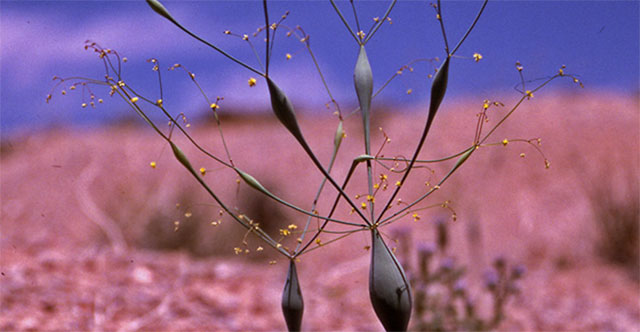
Geobotanical Prospecting and Mineral Detection
Geobotanical prospecting, a field of study that explores the relationship between vegetation and mineral-rich soils, has proven invaluable in mineral exploration. Historical records document correlations between specific plants and soil with high mineral content, with geobotanical methods still utilized today to identify copper in Sweden and Finland, as well as heavy metals such as uranium, lead, zinc, nickel, chromium, barium, and lead.
Desert Trumpet Plant as a Gold Indicator
In 1900, Emil Lungwitz, an American scientist and inventor, published a paper on "The Decomposition of Gold Through Plants" in the Mining Magazine. Subsequent research in the 1960s by scientists in the United States, Canada, New Zealand, and Siberia confirmed the ability of certain plant species to absorb small amounts of gold into their branches and leaves.
During the discovery of gold deposits in Nevada and Arizona, scientists observed the frequent presence of a particular plant species: the desert trumpet.
Characteristics of the Desert Trumpet
The desert trumpet (Eriogonum inflatum) belongs to the buckwheat family and is native to the rocky, mineral-rich landscapes of Arizona to Baja California. It thrives at elevations ranging from 100 feet to 5,900 feet, inhabiting areas from sandy and gravelly soils to grasslands and desert ecosystems.
As a perennial herb, the desert trumpet grows erect, reaching heights of up to 3 feet. Its grayish-green stems exhibit distinctive bulbous swellings resembling bottlenecks. These swellings are attributed to the presence of gall-inducing insects, primarily the wasp genus Odynerus. The wasps lay their eggs within the stems, creating a safeguarded nursery with access to food and shelter for their young. The resulting irritation is believed to contribute to the plant's swollen stem structure.
The inflorescences of the desert trumpet bear numerous yellow flowers with densely hairy, curved tips and greenish or reddish midribs. The stamens protrude beyond the flower tube. The basal leaves have oval-shaped blades and are attached to 1-2 inch stalks. The small, funnel-shaped flowers are loosely arranged in open clusters called cymes.
Medicinal and Other Uses
In addition to its potential as a gold indicator, the desert trumpet has documented medicinal uses. Native Americans used its crushed stems, roots, and leaves to relieve colds and as an antiseptic wash for infected cuts, while the roots were employed to treat diarrhea. Historical records indicate that the entire plant could also be utilized for treating rheumatism, inducing sweating, calming stomach ailments, and relieving muscle cramps and stiffness, with some accounts suggesting its use as an antidote to syphilis.
The hollowed-out stems of the desert trumpet have also been reported as a source of drinking tubes and smoking pipes, according to James L. Reveal's Flora of North America.
Experienced desert explorers often kept an eye out for the desert trumpet, recognizing its potential to lead them to nearby gold deposits.
